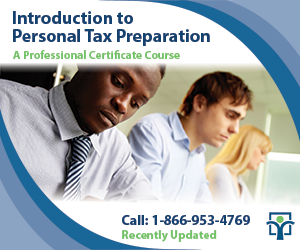Last updated: November 28 2017
Special Report on Taxation of Passive Income in Private Corporations

The tax take is much more significant than first thought. The Parliamentary Budget Officer (PBO) released a report on November 23, 2017, that suggests the revenue increase from proposed new taxes on passive income earned in a small business corporation will be as high as $6 Billion dollars annually by the time the full effects of the changes are implemented. This is much more than the initial $250 Million figure first suggested by the Department of Finance, and still only a best guess.
The job of the PBO is to support parliament by providing analysis of macro-economic and fiscal policy so that the quality of debate in parliament can be enhanced, and greater transparency and accountability can be promoted with regard to Canada’s budget process. It’s a good thing, especially with these provisions, which the government sprang on business owners in the middle of Canada’s 150th birthday summer and with only a 75-day consultation window.
The federal government believes private corporations reap unfair tax advantages in investing capital that is already taxed at low rates, compared to the opportunities afforded to certain employees whose after-tax dollars are smaller before they invest.
In response, it proposes to tax the passive investment income earned by small businesses at rates of over 70 percent (when corporate and personal rates are combined), and after a cap of $50,000 is applied. (As a concession to a significant outcry this fall, the government would allow $50,000 to be earned at current tax rates—a total of just over 50 percent depending on where you live—which is certainly high enough, some would say.)
This new investment income cap represents a 5 percent return on $1 Million of capital; not a huge sum when you consider that any income earned from rent is included in the definition of passive income. But perhaps even more important, “second generation” earnings—or the reinvestments of the income sheltered by the cap—would be subject to the new high tax rates. This assumption by the PBO seems to be contrary to the Minister’s statements in October, which left the impression that all income on existing savings in a private corporation would be grandfathered.
The PBO analysis is worth the read, as it provides more depth on how the government is thinking about implementing changes in tax treatment of private corporations. It also lends some much-needed transparency to the government’s proposals, which were introduced without draft legislation or impact studies. Notably, three changes are considered:
1. No More RDTOH (Refundable Dividend Tax On Hand): This refers to the proposal that refundable taxes on property income, portfolio dividends and capital gains would no longer be refundable where the source of funds for these investments benefited from low corporate tax rates.
2. No Capital Gains for Private Corps: Despite Mr. Morneau’s promises after the March 2017 budget that the income inclusion rate for capital gains would not be changed, this does not appear to be the case for capital gains earned by private corporations that are subject to low corporate tax rates.
 |
Specifically, capital gains dividends, which represent the 50 percent tax-exempt portion of capital, would have to be extracted from the corporation as non-eligible dividends under the proposals, instead of being distributed tax-free. The Minister also gave no reassurances on the exemption for tax-free proceeds of life insurance policies within the capital dividend account, so this is a concern as well.
3. Retained Earnings as Basis of “Value”: Existing passive investment portfolios, as defined by their “nominal dollar value” per firm, would not be affected by the changes. Rather, the policy changes would apply only to passive investment income on new investments exceeding the income threshold of $50,000.
Consider the footnote in the PBO analysis that describes the nominal dollar value per firm as the firm’s retained earnings. This would be used as a “proxy,” or value, for the passive investment asset portfolio. As the new policy is phased in, the PBO report says, the ratio of old vs. new retained earnings would determine the amount of investment income subject to the new rules.
But there is another concern here. Retained earnings of a passive corporation do not account for gains accrued to the date of implementation of these new rules, says Larry Frostiak, FCPA, FCA, CFP, TEP, Managing Partner, Frostiak & Leslie Chartered Professional Accountants Inc. in Winnipeg, who has been on tour with Knowledge Bureau lecturing on these changes at the November CE Summits. As a result, there is uncertainty whether the “grandfathered assets” will be valued at “cost” or at “FMV,” and how they will be tracked on a go-forward basis.
Add to this that “second generation” earnings from this grandfathered capital would be taxed at the new high tax rates if reinvested. This together with other proposed changes—the new Tax On Split Income rules, for example—would force costly and time consuming complexity on the private corporation.
Clearly, under the new rules, there would be an incentive to pay out salary and dividends into personal hands. Shareholders of these small business corporations otherwise give up progressive tax rates on their dividends and face the prospect of keeping less than 30 percent of their passive investments—before inflation—once dividends on retained earnings are distributed into personal hands.
However, these actions would also strip the company of its ability to shore up savings to meet cash flow crunches, or to retain equity to enable borrowing from financial institutions for future growth plans or to allow shareholders to save adequately for their retirement as business revenues ebb and flow.
There is no apparent acknowledgement that retained earnings fluctuate with major unforeseen obstacles like economic, legislative and currency changes, to name only a few. For example, the analysis does not take into account the behavioral impact of looming minimum wage and CPP hikes, or the negative outcomes of other factors beyond the control of business owners, such as the fate of trade agreements.
4. 90 Percent of Revenue Gains Go to the Federal Government: While the PBO has estimated that provincial revenues would also increase as a result of these policy changes, the majority of the tax gains will be the federal government’s. Provincial government responses to their own debt-management woes are yet to be understood by private business owners, as another variable to the fate of their after-tax dollars.
I have outlined below four potential outcomes of these proposed tax reforms, now even more glaring after the PBO analysis.
-
Thwarted Economic Growth and Brain Drain. We are still led to believe that only a few CCPCs (Canadian Controlled Private Corporations) will be affected by these changes: 47,000 of the largest CCCPs, or 2.5 percent of all private corporations. Yet there is legitimate concern that the changes will be much more broad based.
But, if the assumptions are accurate and apply only to the minority at the top, does the government believe these businesses are going to stay in Canada to grow? Canada would have to provide a compelling reciprocal path in exchange for a return of only 30 cents on each passive investment dollar, after tax. - A Blow to Risk Management. With capital gains on financial and real estate assets (traditionally representing after-tax earnings on active business activities) proposed to be recharacterized as non-eligible dividends, taxpayers must consider whether they are being adequately compensated for the risk taken in their passive investments. Should tax-exempt life insurance policy benefits lose their exempt status, the tax shock on the death of owner-managers may affect the stability of these private corporations, and that risk cannot be mitigated if the shareholder is no longer insurable.
- Significantly Reduced Retirement Savings. The PBO analysis states that 60 percent of all passive income is earned by CCPCs with no active business income, suggesting they were set up solely for the purpose of generating passive income. This would be absolutely true in the context of an aging demographic. Owner-managers who sell their enterprises in order to retire would now have to draw non-eligible dividends from these now passive corporations. There is no income splitting on these dividends, as an employee would be eligible for on a defined benefit plan. With the enormous tax erosion on reinvested earnings, these retired business owners face an incredibly unfair result for a lifetime of hard work and risk-taking.
The government’s ultimate goal is to force owners of private corporations to distribute corporate income (taxed at low corporate rates) into personal hands immediately, rather than keep that money invested inside their corporations. The tax take is estimated by the PBO to be $1 Billion in the first one to two years after implementation, $3 to $4 Billion over the medium term up to 10 years after implementation and up to $6 Billion over the longer term after that.
The PBO also notes that estimated revenues could be reduced by 10 to 15 percent due to the potential of “behavioural responses” by the targeted taxpayers, compounding over time as each year less income is invested inside CCPCs. However, it’s quite possible the cost will be much, much higher, as professionals and business owners look to other jurisdictions to shore up their futures. That would indeed be Canada’s great loss.
Evelyn Jacks is President of the national post-secondary institute Knowledge Bureau and author of 52 books on tax and family wealth management. Her 53rd book, New Essential Tax Facts, will be published in 2018.
©2017 Knowledge Bureau Inc. All Rights Reserved.





